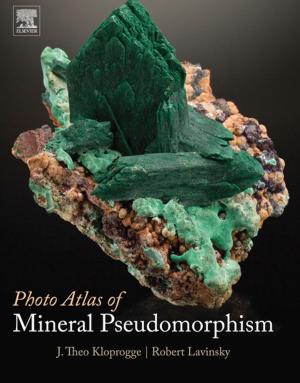Handbook of Solid-State Lasers
Materials, Systems and Applications
Nonfiction, Science & Nature, Technology, Optics, Material Science| Author: | ISBN: | 9780857097507 | |
| Publisher: | Elsevier Science | Publication: | February 20, 2013 |
| Imprint: | Woodhead Publishing | Language: | English |
| Author: | |
| ISBN: | 9780857097507 |
| Publisher: | Elsevier Science |
| Publication: | February 20, 2013 |
| Imprint: | Woodhead Publishing |
| Language: | English |
Solid-state lasers which offer multiple desirable qualities, including enhanced reliability, robustness, efficiency and wavelength diversity, are absolutely indispensable for many applications. The Handbook of solid-state lasers reviews the key materials, processes and applications of solid-state lasers across a wide range of fields.
Part one begins by reviewing solid-state laser materials. Fluoride laser crystals, oxide laser ceramics, crystals and fluoride laser ceramics doped by rare earth and transition metal ions are discussed alongside neodymium, erbium and ytterbium laser glasses, and nonlinear crystals for solid-state lasers. Part two then goes on to explore solid-state laser systems and their applications, beginning with a discussion of the principles, powering and operation regimes for solid-state lasers. The use of neodymium-doped materials is considered, followed by system sizing issues with diode-pumped quasi-three level materials, erbium glass lasers, and microchip, fiber, Raman and cryogenic lasers. Laser mid-infrared systems, laser induced breakdown spectroscope and the clinical applications of surgical solid-state lasers are also explored. The use of solid-state lasers in defense programs is then reviewed, before the book concludes by presenting some environmental applications of solid-state lasers.
With its distinguished editors and international team of expert contributors, the Handbook of solid-state lasers is an authoritative guide for all those involved in the design and application of this technology, including laser and materials scientists and engineers, medical and military professionals, environmental researchers, and academics working in this field.
- Reviews the materials used in solid-state lasers
- Explores the principles of solid-state laser systems and their applications
- Considers defence and environmental applications
Solid-state lasers which offer multiple desirable qualities, including enhanced reliability, robustness, efficiency and wavelength diversity, are absolutely indispensable for many applications. The Handbook of solid-state lasers reviews the key materials, processes and applications of solid-state lasers across a wide range of fields.
Part one begins by reviewing solid-state laser materials. Fluoride laser crystals, oxide laser ceramics, crystals and fluoride laser ceramics doped by rare earth and transition metal ions are discussed alongside neodymium, erbium and ytterbium laser glasses, and nonlinear crystals for solid-state lasers. Part two then goes on to explore solid-state laser systems and their applications, beginning with a discussion of the principles, powering and operation regimes for solid-state lasers. The use of neodymium-doped materials is considered, followed by system sizing issues with diode-pumped quasi-three level materials, erbium glass lasers, and microchip, fiber, Raman and cryogenic lasers. Laser mid-infrared systems, laser induced breakdown spectroscope and the clinical applications of surgical solid-state lasers are also explored. The use of solid-state lasers in defense programs is then reviewed, before the book concludes by presenting some environmental applications of solid-state lasers.
With its distinguished editors and international team of expert contributors, the Handbook of solid-state lasers is an authoritative guide for all those involved in the design and application of this technology, including laser and materials scientists and engineers, medical and military professionals, environmental researchers, and academics working in this field.
- Reviews the materials used in solid-state lasers
- Explores the principles of solid-state laser systems and their applications
- Considers defence and environmental applications















